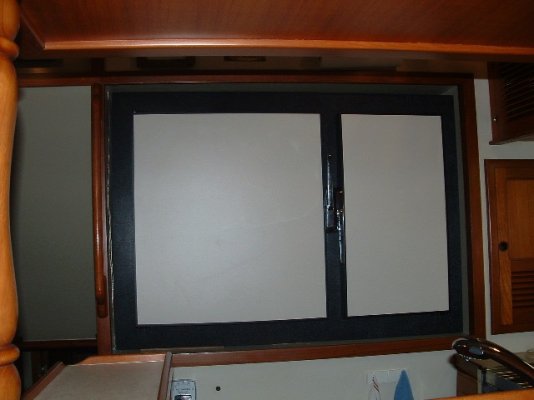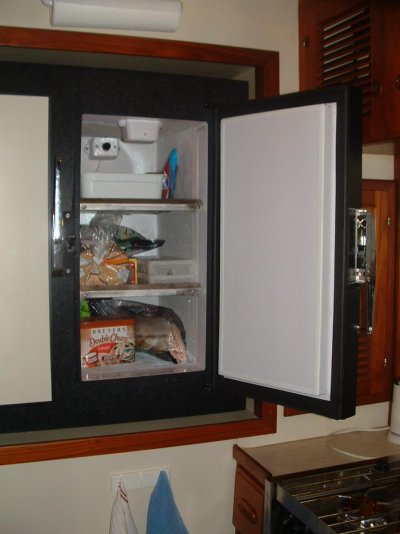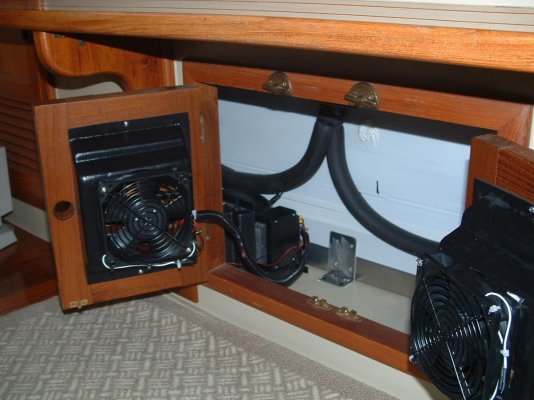Years ago I had a 40' Penbo trawler - made of, Gasp! Wood! The only power was a 454 GM diesel. Refrigeration was mechanical with the compressor belted to the engine and to a 120 VAC motor for plugged in cooling.
The box was sailboat style, built in, top loading, freezer next to fridge. To regulate temp in fridge, you slid a plate to control the size of the opening between the freezer and fridge. Cooling plates were in freezer only.
There was no automatic control. When motoring, a switch controlled a magnetic clutch and you monitored temperature in freezer. Like wise at shoreside.
Primitive by today's standards but effective.
It seems to me that other than hot water, it's your plethora of refrigerators, ice makers and freezers that is using the bulk if your battery.
Two suggestions - both suitable for DIY:
1) heat exchanger from engine and genset cooling to hot water.
2) tear out those inefficient fridges, etc , and build a good, really well insulated, box and use mechanically driven compressor(s). With some clever wiring, you could even have the thermostat start/stop the generator? You can buy just the ice maker device and install in new freezer.
An induction cooktop wouldn't hurt. Just a cheap hot plate style.
If you don't want to build the boxes but have room for a 72" tall unit, our Hitachi 14.5 cu.ft. Hardly uses any power - I'm sure less than a single under counter 5 cu.ft. one. And it makes ice too.



